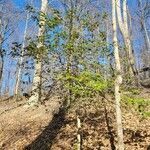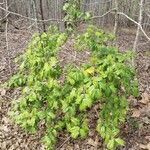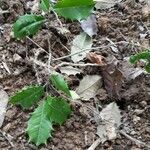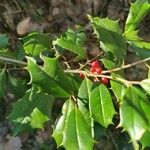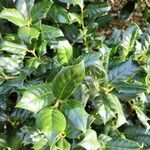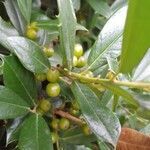An evergreen tree. It grows 4-15 m tall. The bark is grey and smooth. The leaves are narrowly oval and 10 cm long by 5 cm wide. They have spines on the edge. They are not shiny and are slightly more yellow green underneath. The male and female flowers are usually on separate plants. They are dull white and in the axils of leaves. The fruit is a red berry 1 cm across.
